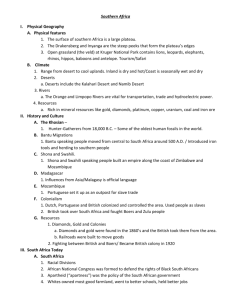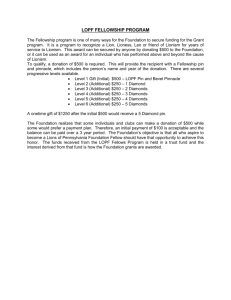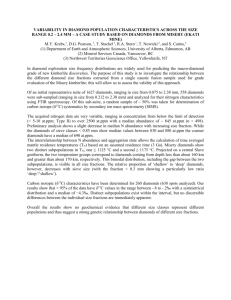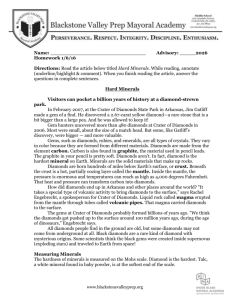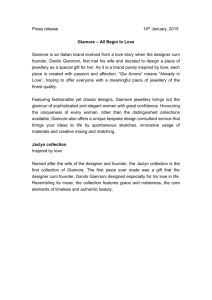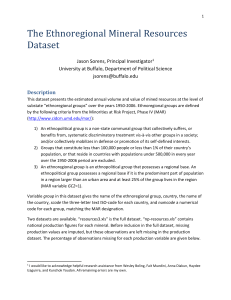Part 2 Debswana and Diamonds Diamonds led the way on foreign
advertisement
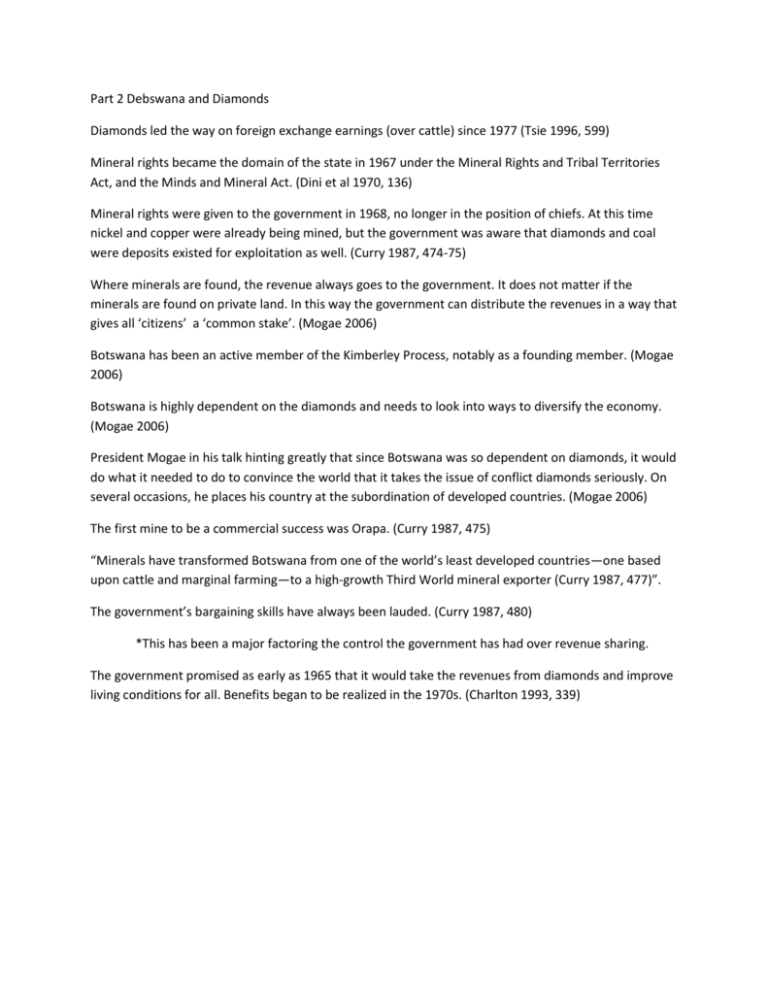
Part 2 Debswana and Diamonds Diamonds led the way on foreign exchange earnings (over cattle) since 1977 (Tsie 1996, 599) Mineral rights became the domain of the state in 1967 under the Mineral Rights and Tribal Territories Act, and the Minds and Mineral Act. (Dini et al 1970, 136) Mineral rights were given to the government in 1968, no longer in the position of chiefs. At this time nickel and copper were already being mined, but the government was aware that diamonds and coal were deposits existed for exploitation as well. (Curry 1987, 474-75) Where minerals are found, the revenue always goes to the government. It does not matter if the minerals are found on private land. In this way the government can distribute the revenues in a way that gives all ‘citizens’ a ‘common stake’. (Mogae 2006) Botswana has been an active member of the Kimberley Process, notably as a founding member. (Mogae 2006) Botswana is highly dependent on the diamonds and needs to look into ways to diversify the economy. (Mogae 2006) President Mogae in his talk hinting greatly that since Botswana was so dependent on diamonds, it would do what it needed to do to convince the world that it takes the issue of conflict diamonds seriously. On several occasions, he places his country at the subordination of developed countries. (Mogae 2006) The first mine to be a commercial success was Orapa. (Curry 1987, 475) “Minerals have transformed Botswana from one of the world’s least developed countries—one based upon cattle and marginal farming—to a high-growth Third World mineral exporter (Curry 1987, 477)”. The government’s bargaining skills have always been lauded. (Curry 1987, 480) *This has been a major factoring the control the government has had over revenue sharing. The government promised as early as 1965 that it would take the revenues from diamonds and improve living conditions for all. Benefits began to be realized in the 1970s. (Charlton 1993, 339)
